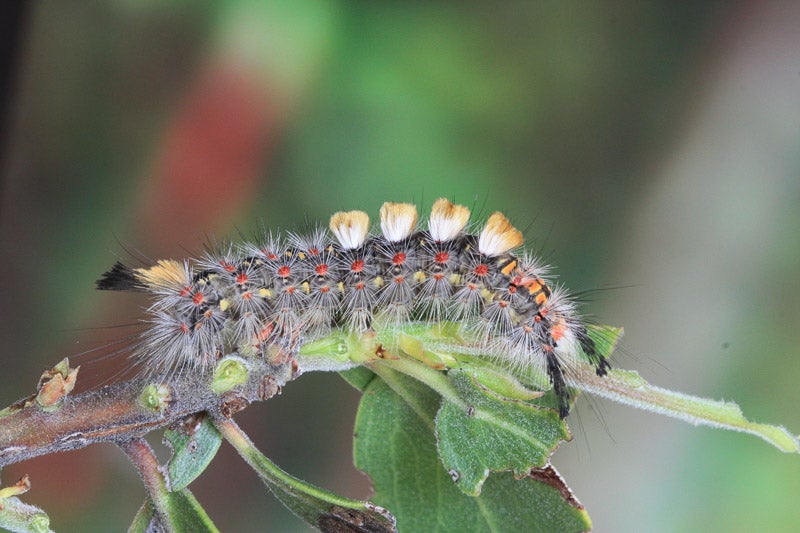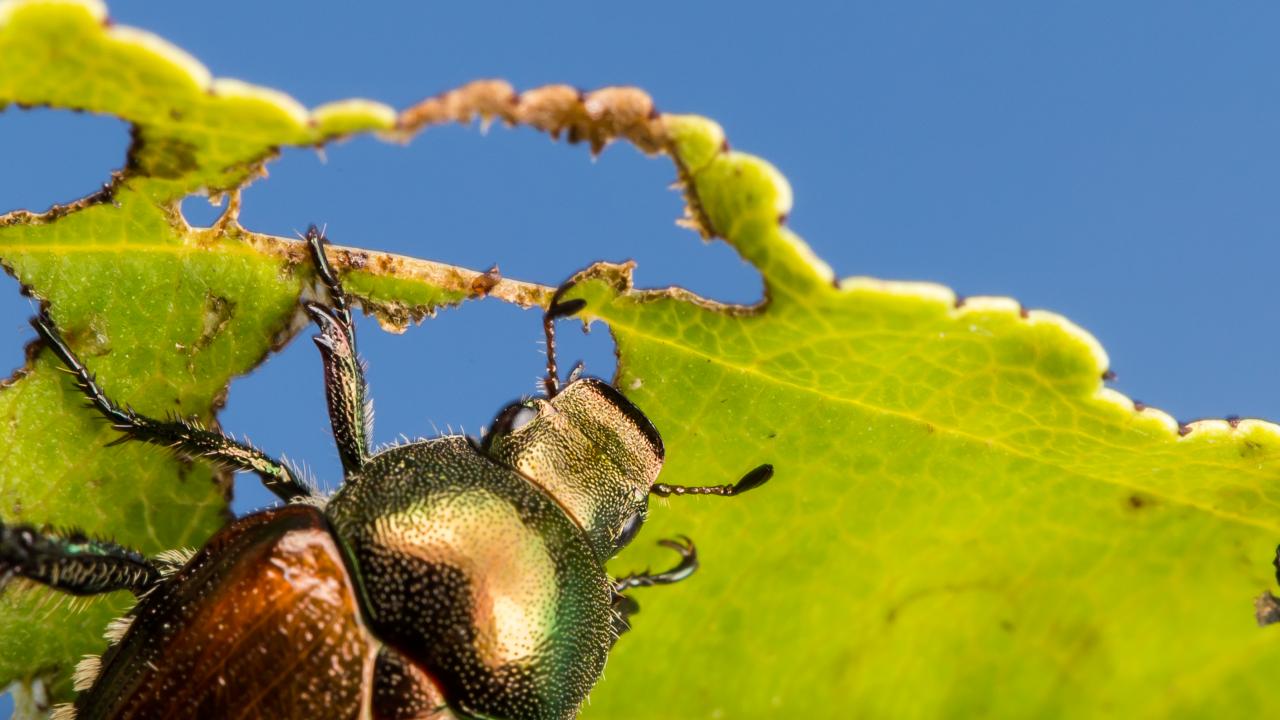Quick Summary
- Monoculture crops provide the nutrient levels insect pests crave
- Fields with a variety of plants provide inconsistent nutrient levels for insect pests, so the pests do poorly
- Returning plant diversity to farms could be a key step toward sustainable pest control
- Mixing genotypes of the same crop species could add diversity without hurting production levels
Left to its own defenses, a farm field growing a variety of plants tends to attract fewer insect pests than a field growing just one type of crop. While scientists and farmers have noted that difference for years, the reasons behind it have been poorly understood.
A study led by the University of California, Davis, and published Oct. 12 in the journal Nature explains that much of the discrepancy may have to do with the nutritional needs of insects. Returning plant diversity to farmland could be a key step toward sustainable pest control.
“Insects have a perfect nutrient level that they really like,” said lead author William Wetzel, a doctoral student in Population Biology at UC Davis at the time of the study and currently an assistant professor at Michigan State University. “When it’s too high or too low, they do poorly.”
The problem with monocultures
The problem with monocultures, Wetzel said, is if an insect likes the crop, that insect has a large food supply to draw from all in one place. Conversely, a field containing a variety of plants does not offer a large block of food for the insect, so it will not get the nutrients it needs to survive and thrive.
“A monoculture is like a buffet for plant-eating insects where every dish is delicious,” Wetzel said. “A variable crop is like a buffet where every other dish is nasty.”

Many small farms around the world already include a diverse mixture of plants. But in most monocultures, the plants are bred to be as identical as possible. How can larger growers introduce more diversity while maintaining their same level of production?
Mixing it up
One way, the study suggests, is to introduce a mixture of genotypes of the same crop species with different nutrient levels. For example, the parts consumers eat, such as the ear of corn or head of broccoli, could be identical; but the parts insects eat, like the leaves, could vary. This would allow for consistency in what is sent to market while introducing diversity to the crop.
Wetzel said this sort of genotype mixing for plants is already being done on some rice and wheat fields to reduce the spread of disease among the crops.
“So far people haven’t done that in ways to reduce insects,” Wetzel said. “But it shows that it’s possible to mix varieties and genotypes together. Now we need to think about how to do that to control insects.”
Background
For the study, researchers examined 53 species of insects — mostly caterpillars, as well as grasshoppers, beetles, aphids and flies. They applied a universal mathematical law called Jensen’s inequality to the data collected to calculate how plant diversity influences plant-eating insects.
Co-authors on the study include Heather Kharouba from UC Davis Center for Population Biology and University of Ottawa Department of Biology, Moria Robinson from UC Davis Center for Population Biology, Marcel Holyoak from UC Davis Department of Environmental Science and Policy, and Richard Karban from UC Davis Department of Entomology and Nematology.
The study was supported by grants from the UC Davis Center for Population Biology.
Media Resources
Kat Kerlin, UC Davis News and Media Relations, 530-750-9195, kekerlin@ucdavis.edu
